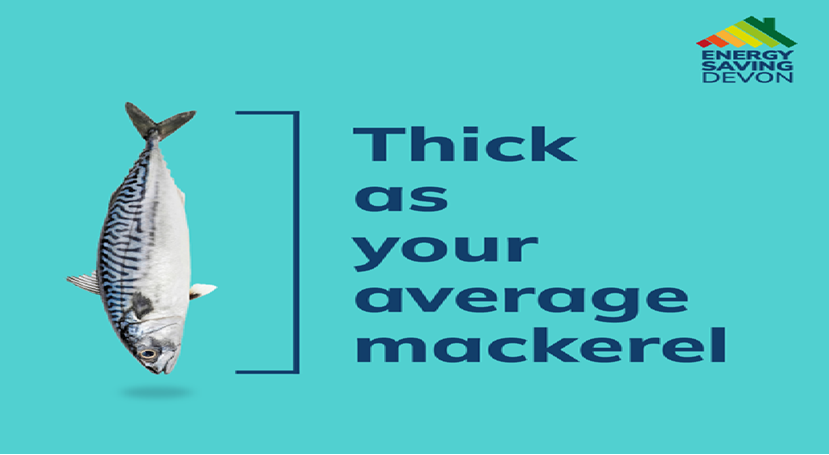A trial delivered through social media ads directed people to information on loft insulation, testing two approaches with varying messages. The trial reached 205,324 people and showed that roof imagery and social norm messaging were most effective at encouraging people to read further information on loft insulation.
Introduction
In Devon, residents face a cost-of-living crisis and rising fuel poverty, with limited engagement in energy-efficient home improvements. Social Engine collaborated with six councils to understand residents' attitudes and behaviours towards retrofitting using behavioural insights. A trial delivered through social media ads directed people to information on loft insulation, testing two approaches with varying messages. The trial reached 205,324 people and showed that roof imagery and social norm messaging were most effective at encouraging people to read further information on loft insulation. Lessons learned highlighted the need for tailored communication strategies and evidence-based action plans to encourage energy saving actions, equipping councils with the confidence to apply these findings going forward.
The challenge
As climate change demands rethinking roles in energy consumption reduction and bold environmental protection steps, Devon residents are faced with a cost-of-living crisis and rising fuel poverty. Although the council has been making substantial efforts to promote retrofitting, residents and landlords in Devon are not felt to be engaging in the numbers needed to ensure their homes are energy efficient, with steps such as insulation and draught proofing.
The solution
Working collaboratively with six councils in Devon, Social Engine conducted primary and secondary research to understand the behaviours, attitudes and motivations of residents in Devon in relation to retrofitting their properties (owned or rented).
Of particular interest was the research insight that revealed most properties' lofts were not sufficiently insulated, yet the majority of residents in Devon believed their lofts were insulated. This finding prompted the decision to focus the trial on encouraging people to access information about loft insulation – which meets appropriate standards - with the ultimate aim to take action to insulate their lofts.
The trial used social media advertising to expose Devon residents to ads encouraging them to learn more about loft insulation. By clicking a "learn more" button, they were directed to a landing page on Energy Saving Devon's website, which provided information on installing loft insulation.
The trial consisted of two main conditions: the first compared the recommended depth of insulation required in lofts with imagery intended to be culturally resonant with the county, whilst the second emphasised the loss of heat through roofs due to poor insulation.
Since there was no obvious control condition to use, a decision was made to test the two approaches (two treatments and no control), with two variants of each. One variant emphasised a social norm (four out of five homes lack sufficient insulation) whilst the other contained a loss aversion message (losing heat through your loft). These resulted in four versions of the intervention (two approaches, each with two variants) which were deployed over a four week period.
The impact
The interventions were delivered through a Facebook ad campaign that reached a total of 205,324 people. Each variant of the intervention was delivered to between 42,000 and 59,000 individuals.
Key findings:
- People were 42 per cent more likely to engage with the interventions (as measured by click through) that featured an image of a roof, compared to those that featured a mackerel
- The intervention variants which used social norm messaging were more effective – by 20 per cent - at eliciting user clicks compared to those that used monetary appeal and loss aversion
- The click through rate is particularly high among people who are 65+ years of age, who were 2.5 times more likely than average to click the ‘find out more’ button
- Women were significantly more likely than men to click on any of the four variants of intervention
- The intervention with the roof imagery and social norm messaging was the most effective variant among both men and women
- Rural residents were significantly more likely than urban residents to engage with the interventions by clicking the ‘find out more’ button
- Whilst the roof intervention elicited more user clicks, the mackerel intervention attracted a higher number of Facebook users’ comments
How is the new approach being sustained?
The research insights enabled the development of a segmentation approach for the target audience based on their behaviours, attitudes and motivations in relation to retrofitting and energy efficiency. With this understanding, consortium members are currently focusing activity on matching appropriate messaging, information and resources to personality types within the different segments in order to support these audiences to move forward on their journey – reflecting their different starting points, motivations and barriers they face.
Consortium members also aim to co-ordinate their activity within a wider Energy Saving Devon retrofit group, in order to amplify activity, avoid duplication and coordinate efforts. The wider retrofit group brings together primarily, local authority officers who are delivering grant funded energy efficiency projects and Community Energy Groups working across Devon.
Another opportunity to open up the behaviour change focused consortium has been identified through other climate officers in Devon who sit on the wider Devon Climate Emergency tactical group. Three officers have already expressed an interest in this, which would give the new behaviour change partnership representation from councils throughout Devon.
Lessons learned
The trial findings stress the importance of clear objectives and tailored approaches in communication and engagement for retrofitting. Different strategies should be adopted for engaged and disengaged individuals. For the engaged, the focus is on overcoming barriers towards retrofitting, while for the disengaged, stimulating debate on retrofit benefits and carbon reduction is crucial.
Local primary research identified three population segments and we developed logic models for engaging each of them in distinct, tailored ways. These models provide clear, evidence-based action plans enabling consortium members to apply them confidently beyond the period of this trial.
Above all, what matters most is that the participating councils feel equipped with the confidence to apply the learning from the project over the course of the past 12 months going forward.
Contact person for the project: Lucinda Brook, Low Carbon City Officer, Plymouth City Council - [email protected]
Images
Image 1
Image 1 shows one intervention variant from our first intervention approach. It emphasises the loss of heat through roofs due to poor insulation. It features an image of a red-tiled roof with the slogan “Are you losing heat through your roof?”. The caption posted alongside the image highlighted social norms by stating that four out of five homes in Devon do not have sufficient loft isolation.
Image 2
Image 2 shows the second intervention variant from our first intervention approach. This ad highlights the loss of money as a result of poor loft insulation. It features an image of a red-tiled roof with the slogan “Energy bills going through the roof?” The caption posted alongside the image appealed to a sense of loss aversion by pointing out that residents may be losing money due to insufficient insulation.
Image 3
Image 3 shows the ad developed for our second intervention approach which compared the recommended depth of insulation required in lofts with locally identifiable objects, in this case a mackerel, for increased salience. It features an image of a mackerel with the message “Thick as your average mackerel”.
This ad was tested with two different captions alongside it, one emphasising a social norm and one highlighting financial loss due to insufficient insulation.



